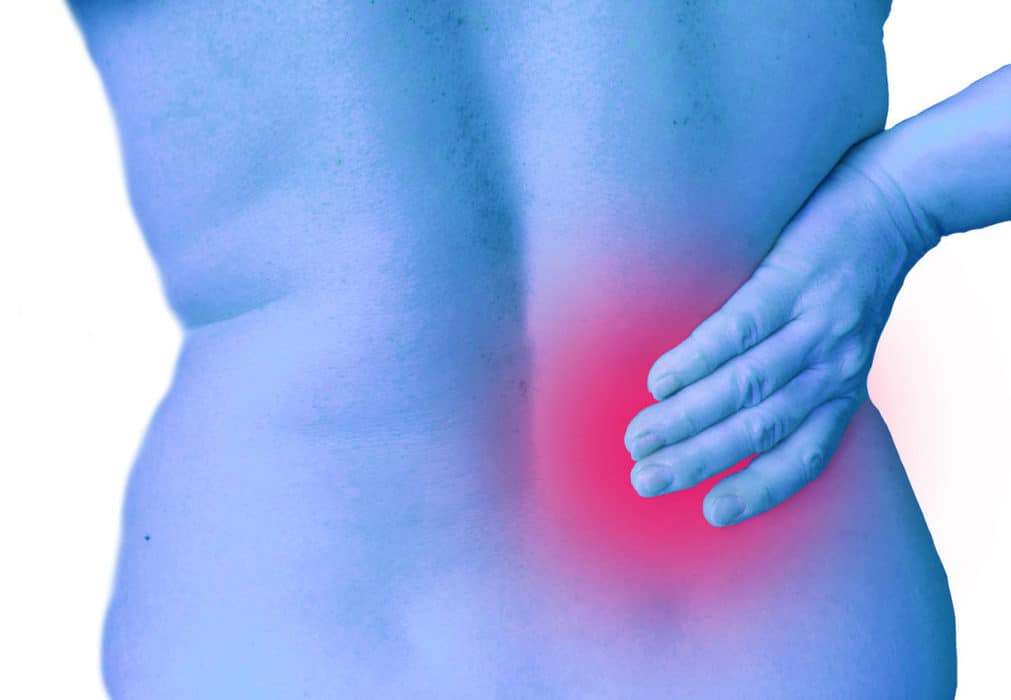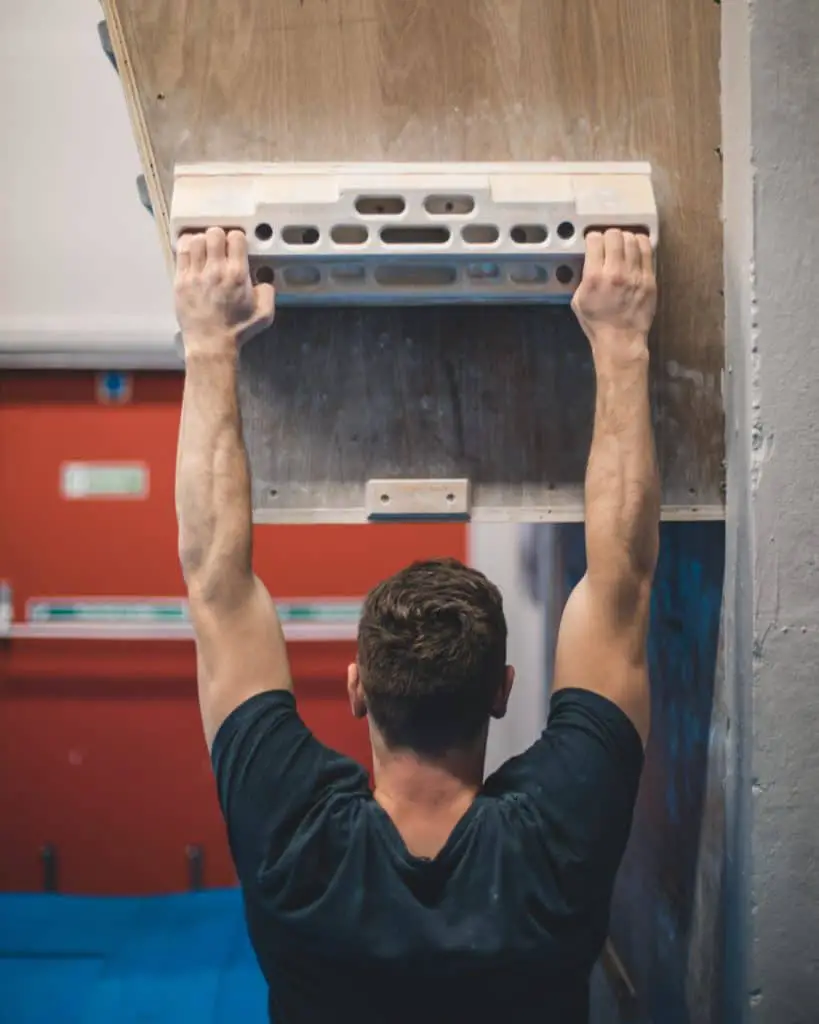
When starting out with rock climbing or bouldering, many people will wonder the same thing, will it help their bad back or make it worse? Lower and upper back pain is very common in the western world because of the jobs we do. Unfortunately, there isn’t a simple answer to this question as rock climbing can be both detrimental for your back health or it can strengthen it.
So, is rock climbing good for your back? Studies have shown that rock climbing can help decrease levels of chronic low back pain when it is practised at least once per week for a minimum duration of an hour per session. Studies have also shown that rock climbing activates the trunk muscles (three groups of muscles that move the vertebral column) in the body when the activity is practised with low intensity and in low volume. The same study has not been tested on high intensity or at high volumes so there isn’t any evidence to support this, however. Contrary to this, rock climbing can be detrimental to back pain for a few different reasons:
- Jumping/falling off the wall when bouldering and landing on your feet can cause the vertebrae in your spine to compress
- Rock climbing depends on having a strong core – if you don’t have a strong core you may use your back which isn’t ideal, or your muscles may be imbalanced
- Back injuries can happen in any sport due to accidents
- Using incorrect technique can cause you to engage your back and cause damage or injury
You can counter most of the above bullet points by climbing down a wall instead of jumping, working on strengthening your core muscles, and using correct technique when climbing.
Let’s go over the studies that show rock climbing helps with back pain, and also talk about how rock climbing can cause back pain.
Page Jumps
- Studies that Show Rock Climbing is Good for Reducing Back Pain
- How can Rock Climbing Cause Back Pain?
- Using a Hangboard or Pullup Bar to Help with Back Pain
- Stretching to Help Back Pain and Posture
- Related Questions
Studies that Show Rock Climbing is Good for Reducing Back Pain
There are a few studies that support the idea that rock climbing is good for reducing back pain. In this section we’re going to go through these studies by giving a brief outline of each of them and concluding with their results.
- Kim et. al studied climbing and how the trunk muscles of the body reacted when performing this activity on climbing walls with 0°, 10°, and 20° angles. The trunk muscles are three groups of muscles that move the vertebral column, form the thoracic and abdominal walls, and cover the pelvic outlet. The activities of the trunk muscles were measured using an EMG for 7 seconds. 24 healthy adults without any climbing experience were selected in this study. It was found that for every 10° of inclination there were significant differences in the activity of the trunk muscles. This means that climbing helped activate these groups of muscles.
- Another study conducted by the Medical University of Vienna set out to find out if rock climbing has a positive impact on low back pain. They did this by taking a total of 30 patients aged between 18-45 with chronic low back pain, having no climbing experience, and assigned them to 2 different groups. One group was the “climbing group” and the other group were a control group that had no treatment. The climbing group were instructed to climb 10 sessions in 8 weeks, climbing at least once a week with a minimum duration of an hour. There were 5 different climbing routes for them to climb. The results showed that the participants in the climbing group had a reduction in disc protrusion, improvements when assessing VAS in a minimal finger-floor-distance position, and a significant difference in time course between the two groups using the Oswestry Disability Index. It was concluded that “Climbing may be an effective and low-cost therapy option for people with chronic low back pain”.
How can Rock Climbing Cause Back Pain?
Rock climbing can cause back pain in many different ways, most of which can be avoided quite easily if you actually put some thought behind your actions.
Jumping/FallingOff the Wall when Bouldering
When bouldering you’ve probably been told on multiple occasions to climb down the safest route after topping out or sending the climb. There’s a reason for this: so you don’t cause an acute or long-term injury. Unfortunately the same may happen when you fall off a problem while bouldering. If we fall off accidentally, or jump off purposefully from a climb then we are risking injury, especially on our spine. Every time you land on your feet after falling 10-15 feet above the ground you’re compressing the vertebrae in your spine. Over time this may cause spinal problems. There are ways to reduce the risks though.
The obvious way to reduce the risk when you’ve sent a climb is to climb down the easiest graded route from the top to the bottom instead of jumping. There’s not always a way to do this however, sometimes you haven’t got an easy route to climb down or you’re just too tired after sending the problem. In this case you’re probably going to have to fall. Falling off accidentally also comes with problems if you land on your feet or in other ways that may cause injury. For these two reasons, I suggest that you learn how to fall correctly. I’ve written an article about conquering the fear of falling, and in this article I include a method of how to fall correctly and information on how NOT to fall so you can reduce the chance of injury. You can find the method by clicking this link.
Having a Weak Core or Imbalanced Muscles
Rock climbing targets the core as one of its main muscles groups, and if you have a weak core then you’re more likely to use your back in dangerous or unsafe ways to help you manoeuvre up a problem. Your core is especially engaged when roof climbing and climbing on overhangs. Imbalances of the core can also cause back pain. If your core is stronger in one part than another and the muscles are imbalanced then this may affect your back pain overall. The best thing I can suggest for a weak or imbalanced core is obviously to train it and activate it fully. Planking on the floor is one of the best ways to engage and balance the core, but using an exercise ball when planking is even better. Adding an exercise ball to your planking routine actually means that your core has to be used to stop the ball from moving, therefore engaging it properly. To do this, get yourself a normal exercise ball, kneel in front of it and place your forearms on top with your fingers interlaced. Tighten your core and lift your knees off the floor into a plank. Pull your shoulder blades down and tighten your glutes. Hold this for 30 seconds, then repeat 5 times.
Back Injuries due to Accidents or by using Incorrect Technique
Back injuries can also happen because of accidents, and there’s sometimes not much we can do about this except take the appropriate safety precautions. Using correct technique when rock climbing is one way to reduce the chance of injuring yourself. If you’re bouldering make sure you’re aware of your surroundings, both when on the wall and off the wall. If you’re already injured, make sure you listen to your body – perhaps you don’t try that dynamic move today that could cause you more trouble than it’s worth.
Using a Hangboard or Pullup Bar to Help with Back Pain
You might not realize it but using a hangboard or pullup bar can actually help you relieve back pain (and shoulder pain) with one simple activity. The simple act of hanging can decompress the vertebrae in the spinal column to reduce back pain and open up the acromion in your shoulder to reduce shoulder pain.

All you have to do is hang on a pullup bar or hangboard, palms facing forward and shoulders near parallel with your ears. Hang here for at least 10 seconds at a time. You can also apply a partial hang by keeping your feet on the floor to reduce the weight your arms are carrying. If you feel like you can do more than 10 seconds at a time then go for maximum of 1 minute per round. Try hang for 7 minutes in total per day, and hopefully you should see a reduction in back and shoulder pain within around 2-3 months, however this obviously on how extensive the injury is.
If you would like a hangboard or pullup bar for your home, check my recommendations out by clicking this link. It’s always good to have a portable pullup bar lying around the house for different exercises anyway.
Stretching to Help Back Pain
Stretching is one of the best ways to help reduce back pain. There are many different stretches that you can do. Let’s look at yoga. Practised in moderation, yoga can be a terrific way to reduce back pain and strengthen the spine and the surrounding muscles. Yoga is primarily an activity that involves stretching exercises. Some of the best yoga poses/exercises to help with back pain are:
- Downward facing dog – lengthens and compresses the entire spine
- Cat-cow – stretches the hips and entire spine
- Supine twist – relieves tension in the entire back
- Sphinx – stimulates the sacral lumbar arch (lower back)
- Thread the Needle – untightens the hamstrings and hips which cause low back pain
You can find more information on these poses and more yoga poses for back pain by clicking this link.
Related Questions
Is Rock Climbing Good for Posture? Rock climbers are known to have bad posture due to tight pectorals, weak upper back muscles, and over developed lats. You can combat this by using lacrosse balls, working on your posture throughout the day, doing yoga, and strengthening your upper back muscles.
